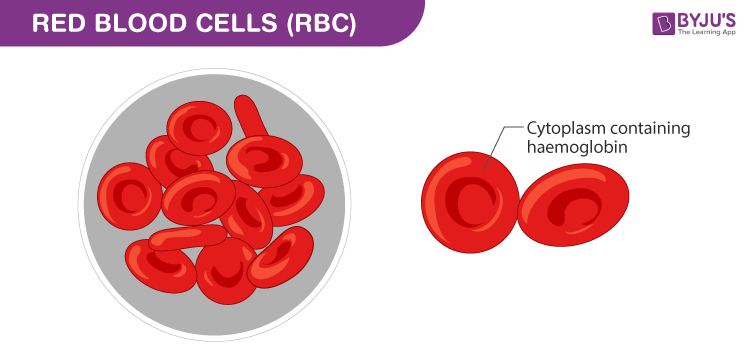Red blood cells (RBCs), also known as erythrocytes, are one of the cellular components of blood that gives the liquid its characteristic colour and is also responsible for the circulation of oxygen to the body tissues.
Below is a diagram of red blood cells.

Features
- Mature erythrocytes are biconcave and discoid shaped.
- They are anucleated.
- Cytoplasm of these blood cells is rich in haemoglobin. It is an iron rich molecule that can bind oxygen readily. This molecule also imparts red colour to the blood.
- The cell membrane of red blood cells is composed of lipids and proteins that gives the cells stability and the ability to deform under stressful conditions without rupturing.
- In humans, the red blood cells are devoid of any organelles or nucleus and can be thought of as a sack of haemoglobin.
- The red blood cells are produced in the bone marrow. They live for upto 120 days before they are recycled by the macrophages.
- In the 120 days that the red blood cells are alive it must perform the function of delivering oxygen from lungs to all the peripheral tissues in the body. It must also assist in the synthesis of ATP molecules and last but not the least, RBCs must collect CO2 generated in the peripheral tissue and return it back to the lungs for elimination.
- Erythrocytes serve as major clinical diagnosis cues. The change in its size, distribution and shape can be indicative of serious pathological disorders.
- Standard RBC count ranges from 4.3 to 5.9 million/mm3 in men and from 3.5 to 5.5 million/mm3 in women.
- The process of production of erythrocytes from stem cells in bone marrow is referred to as erythropoiesis.
- Thalassemia, sickle cell disease, anaemia and pernicious anaemia are some of the diseases related with the dysfunctioning of red blood cells.
Visit BYJU’S Biology for more.
Also Check:
Comments